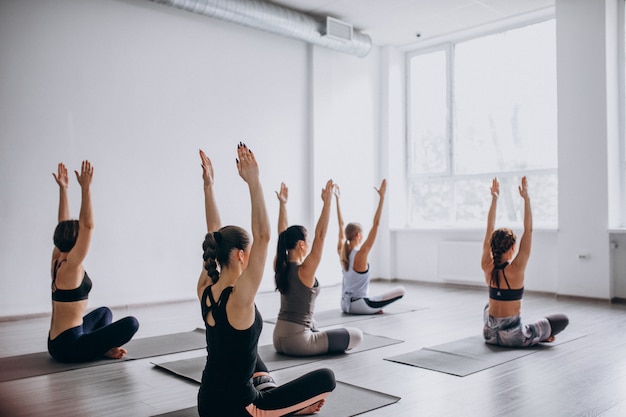
A yoga body isn’t just about flexible limbs; the ancient practice can also boost memory, heart health, and bone strength, explains Anna Magee.
The fascination with yoga in the UK is evident, with Brits spending an astonishing £790 million yearly on classes and mats. Yoga takes various forms, including unconventional ones like rage or naked yoga, paddle-board poses, yoga on horseback, and even dog yoga. But beyond these trends, science increasingly supports yoga’s real benefits.
UCLA researchers discovered that a three-month yoga and meditation course was more effective in reducing age-related brain changes than memory exercises. Another study showed it could improve sleep in breast cancer survivors.
Lucy Edge, a 53-year-old former advertising executive, turned to yoga during a deep depression instead of using prescribed antidepressants. She took a six-month career break to study yoga in India. Though she didn’t achieve the stereotypical “yoga body,” she returned feeling happier and more content than ever. She has since written three books on yoga and founded Yoga Meds, part of her Yogaclicks.com site, which lists over 300 clinical trials highlighting yoga’s benefits for various conditions, including arthritis, insomnia, and obesity.
If your memory training has involved mainly crossword puzzles and Sudoku, it might be time to incorporate yoga. UCLA’s research compared brain scans and memory tests of people over 55 who completed twelve weeks of either memory exercises or yoga and meditation. Those who did yoga and meditation showed better improvements in spatial and visual memories, reduced depression and anxiety, and better stress resilience.
Dr. Clare Walton of the Alzheimer’s Society believes the results, despite being from a small study, suggest a need for more research into yoga and meditation as ways to maintain brain and heart health while aging. In the study, participants practiced Kundalini yoga, which includes breathing techniques, meditation, and some mantra chanting. They also did 20 minutes daily of Kirtan Kriya, which involves chanting, hand movements, and visualizing light.
Yoga is also beneficial for heart health. A 2014 review published in the European Journal of Preventative Cardiology found that yoga could reduce heart disease risk as effectively as conventional exercises such as brisk walking. Stress reduction is a significant factor since stress hormones can elevate blood pressure and heart rates, leading to increased heart disease risk.
Yoga can also improve emotional health, as evidenced by its positive impact on anxiety, stress, and depression. The British Heart Foundation’s Dr. Mike Knapton notes that practicing yoga has shown improvements in blood pressure, cholesterol, and weight—all risk factors for heart disease.
Charlotte Watts, a yoga teacher and nutritional therapist, has designed a series of gentle yoga poses perfect for stress reduction, outlined in her book “The De-Stress Effect.” Anna Ashby from Triyoga Studios recommends Restorative yoga, which involves supported postures held for extended periods, giving the nervous system a much-needed break.
Sarah Shone, a musculoskeletal physiotherapist and yoga teacher, created yoga classes incorporated into a rehabilitation program for back pain. Results were impressive, with 87 percent of participants reporting reduced pain. The National Institute of Clinical Excellence (NICE) includes yoga in their guidelines as a helpful exercise for lower back pain, and Shone aims to train more physiotherapists to use yoga in clinical settings.
Yoga can also prevent incontinence by targeting pelvic floor muscles and other muscles in the body. As a weight-bearing activity, it can help increase bone density and is adaptable for all fitness levels.
Starting yoga? Inform your teacher about any health issues and consider gentler styles like Hatha or Iyengar yoga. For specific conditions like back pain, consult your doctor about possible subsidized yoga courses.
Investing in good yoga props can enhance your practice. Consider where you’ll use your mat, how often you’ll carry it, and your height when selecting a mat. A thicker mat can protect joints and provide comfort. Healthista recommends the Elephant Cork Yoga mat from Valka Yoga, which is eco-friendly, durable, and offers excellent joint protection. Valka Yoga also plants a tree for every purchase.
For support in poses, the matching Elephant Cork Yoga block is highly recommended. Cork blocks are stable and provide good grip, making them a popular choice despite being heavier than foam blocks.
Not flexible? No problem. There are various yoga styles to choose from based on your needs:
– Yin or Restorative yoga: gentle, often with candlelight and cushions.
– Vinyasa Flow: energetic and links postures to breath, adaptable for beginners.
– Iyengar yoga: precise, focusing on alignment and detailed postures, using props.
– Anusara yoga: modern and often done to music, focusing on alignment and flowing movements.
– Yoga Therapy: specific for healing injuries or illnesses, practiced by trained teachers.
Lucy Edge’s latest book, “Down Dog Billionaire,” is available on Amazon.
Consider trying these tips to create a peaceful retreat at home or explore daily success hacks through the perspective of a neuroscientist. Discover secrets to lasting weight loss from Kate Hudson’s personal trainer, or tackle issues like bloating and flatulence. Stay updated with more articles by signing up for our newsletter.